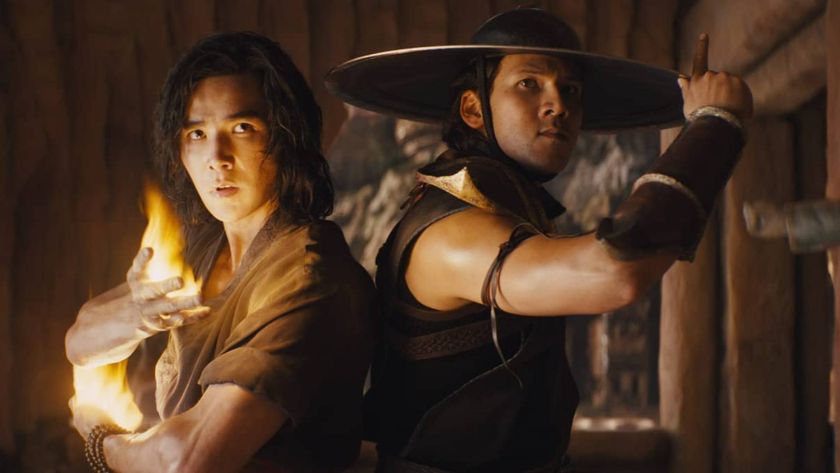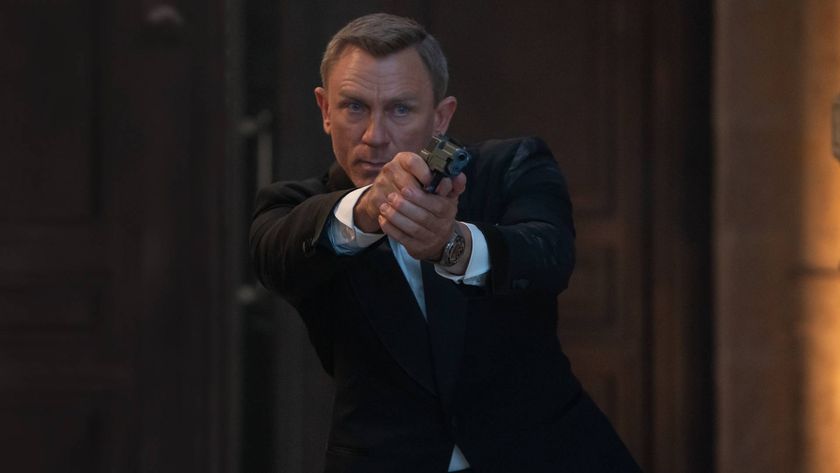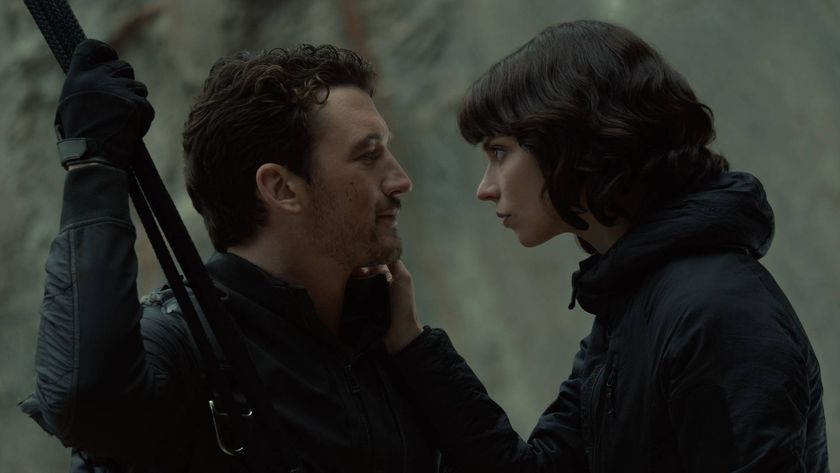The Devil All The Time ending explained by director Antonio Campos
There's a good reason why the ending is different to the books
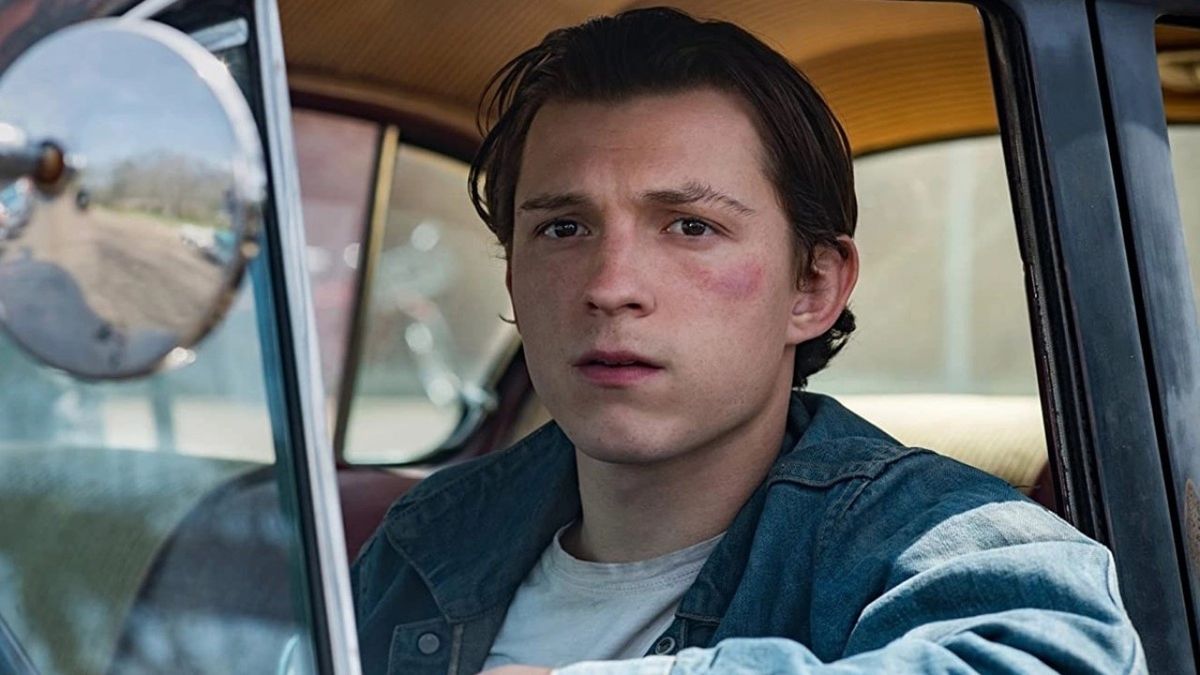
The Devil All The Time ending has all the ingredients for potentially being one of the most talked-about final scenes of the year. Yes, there’s not much competition at this stage but there’s a reason why you’re here: One, it’s tantalisingly ambiguous – the bane of many a viewer rushing to Google once the credits have rolled – and, Two (most importantly for fans of the Donald Ray Pollock novel), it differs in a slight but potentially significant way from the book.
Below, we’ll explain what it all means. This isn’t just any old speculation piece, either. We tasked director Antonio Campos with breaking down the final scene with Tom Holland’s Arvin and how it provides a more hopeful ending than the one in the source material. But first, as a refresher – let’s recap how we Arvin ended up hitchhiking towards Cincinnati, Ohio.
The Devil All The Time ending: what happens in the final scenes

The Russells oversaw their fair share of family tragedy throughout the ‘50s and ‘60s. Perhaps none more so than the pregnancy and suicide of Arvin’s foster sister, Lenora.
Lenora, of course, did the deed with Robert Pattinson’s sweaty, sleazy preacher, Preston Teagardin, and Lenora went to kill herself out of shame (though, in another deeply tragic ironic twist, she had seconds thoughts on suicide before slipping with the noose still tied).
Arvin ends up tailing Preston, and Arvin tells the story of how Preston had sinned by sleeping with underage high school students and sexually assaulting his own wife, all in Preston’s own church in Coal Creek. A scuffle ensues and Arvin ends up shooting Preston dead with the Luger given to him by his dad, Willard.
Looking to flee, Arvin winds up hitchhiking to Meade with Sandy and Carl, a pair of serial killers that have already preyed on several young men – and killed Lenora’s father Roy earlier in the film. That fate doesn’t befall Arvin, however. After feeling threatened, Arvin shoots and kills Carl as well as Sandy, who is unable to kill Arvin thanks to a paranoid Carl replacing the bullets in her gun with blanks
From there, Arvin heads back to the Mitchell Flats in Meade and back to his family home. At the same time, Sandy’s brother, Sheriff Bodecker, finds her body and also gets a tip about the killer (Arvin). After a brief face-off close to Arvin’s family home, Arvin shoots Bodecker dead.
Sign up for the Total Film Newsletter
Bringing all the latest movie news, features, and reviews to your inbox
In the final scene of the film, Arvin once again goes hitchhiking. There, he’s picked up by a long-haired man who’s heading to Cincinnati. The film ends with Arvin looking over into the distance as a radio address outlines President Johnson’s imminent decision to bring in mandatory drafting for the Vietnam War. As he falls asleep, the film depicts a possible unknown future for Arvin, fighting in Vietnam, and him wondering if he’ll start a family and have kids.
The Devil All The Time ending explained by director Antonio Campos
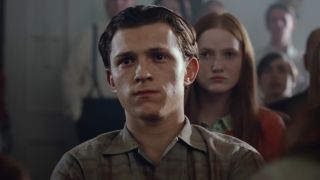
Now, if you’re familiar with the book, you’ll know the Netflix movie actually goes one step further on Arvin’s eventual journey.
“The idea was – in the book, you don’t end in Arvin’s head. The last line in the book is: ‘If he was lucky, someone would give him a ride.’ But we felt like we wanted to go one step further, and to see what happens in the car, and to see what happens when Arvin, who’s been having this insane series of days, sits down and can breathe for a moment. Where does his mind take him?” Campos explained.
I put it to the director that Arvin’s mind might have wandered back to the fateful day from his childhood where he sat in the car while his father, Willard, beat the two men who made lewd comments about his wife. Campos wasn’t so sure: “We wanted to try to use that [final scene] as a way of giving you a slightly more hopeful ending. Obviously it’s not a happy ending, but it has the potential for something. We wanted to sort of end on a note that gave us the potential for something better for Arvin.”
The ending is also a reflection of the key theme of both the book and the film adaptation. Namely, Arvin’s generation trapped by war. First, his father and the trauma he paid forward after the Second World War and the impending conflict in Asia.
“We felt like the other key ingredient was the war,” Campos said. “The war is mentioned throughout the book. In Arvin’s storyline, that gets talked about. And it’s similar to how people talk about it in the movie – it’s kind of just in the background.
“But we felt to really bring home the point that this story is told between two wars, that the radio and the place where his mind goes would really kind of just bring home that point – that this is a story of someone who’s coming back from the war traumatised, and someone who’s potentially going to go into another war and will experience that same trauma. So, the [scene in the] car allowed us to do all of that.”
For more on The Devil All the Time and Antonio Campos, check out our interview with the director – covering everything from Robert Pattinson to filming with real spiders for a scene.
I'm the Senior Entertainment Writer here at 12DOVE, focusing on news, features, and interviews with some of the biggest names in film and TV. On-site, you'll find me marveling at Marvel and providing analysis and room temperature takes on the newest films, Star Wars and, of course, anime. Outside of GR, I love getting lost in a good 100-hour JRPG, Warzone, and kicking back on the (virtual) field with Football Manager. My work has also been featured in OPM, FourFourTwo, and Game Revolution.
Most Popular








